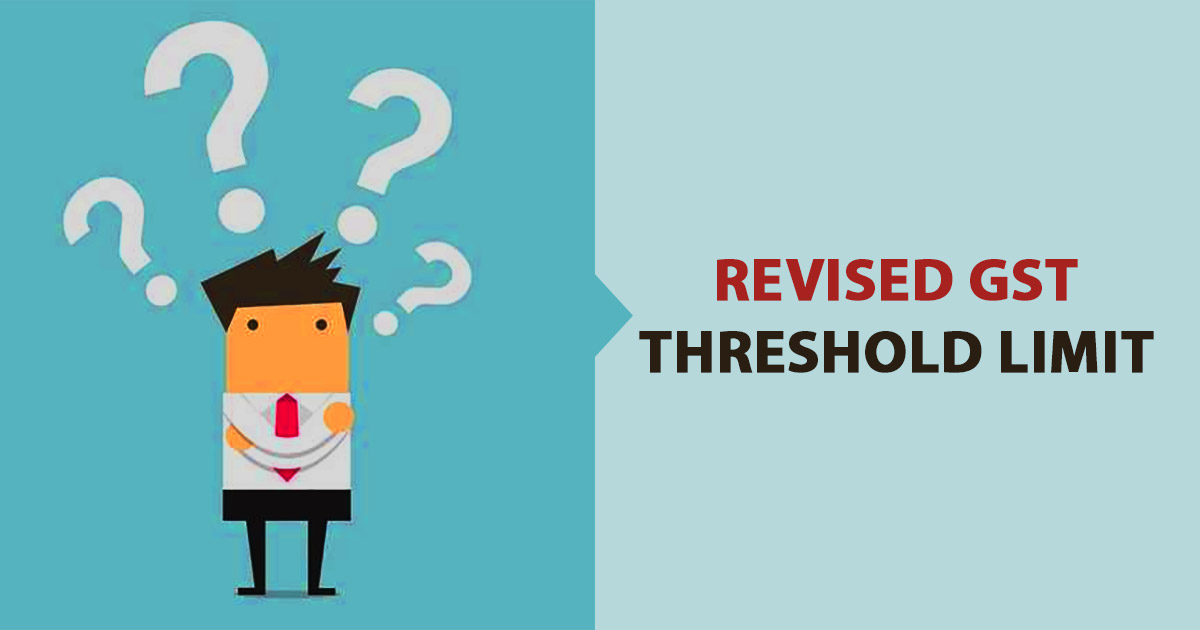As we know, in the GST Regime, businesses whose turnover exceeds Rs. 20 lakhs is required to register as a normal taxable person. But in the 32nd, Goods and Services Tax (GST) council meeting was held on 10th January 2019, the Council announced several changes including the new limit for registration under GST and it would be Rs 40 lakh.
This decision has been taken by the Council in order to help the small taxpayers to be exempted from the Tax net and so from the compliances and costs.
Noticeable Points About Revised GST Threshold Limit
The new amendments have come with far too many complications and its difficult for a small taxpayer to take a self-decision as to whether he falls within the exemption limit or he is still in the GST regime. Here, we showcased all the important points about the new GST threshold limit.
Applicability of the New Rule
- The new specified limit is applicable from FY19-20 onward, i.e., for the financial year starting from 1st April 2019.
Goods and Not Services
- The New specified limit is applicable to only the sale of goods and not services. In the case of the service providers, the limit continues to be Rs 20 lakh except for special states where it is Rs 10 lakh.
Not Applied for Interstate Sales
The new limit is not applicable to the Businessmen who are selling goods out of their state.
Amendments Required in the GST Rules
- AS GST is dual taxation (Central and state) law, the rules regarding the limits of turnover are required to be changed in both the Acts. It is supposed to be done for each state in the Central Goods and Services Act, 2017.
Registration
- There are certain circumstances where a Businessman, small or big, have to be got registered under section 24. Now, in the current scenario, no amendment has been made in this law. Thus, if a small businessman is registered under the effect of this rule, he would continue with the registration. Also, the Exporters and the businessmen who have been selling on websites like Flipkart, Amazon, Snapdeal will have to continue with the earlier registration.
Service Income to be Included in the Calculation of Annual Turnover or not, not Specified
- No clarity has been made on the situations like, if a Businessman makes some extra income by providing services like neon signs or product placements at his shop, then whether he will fall under Rs 20 lakh or Rs 40 lakh category for his overall income calculation.
- Explaining with the help of an example: If a person may have sales of Rs 25 lakh and earns a rental income of Rs 5 lakh. Would he fall under the new exemption limit? As per the new rules, increase in limit is for goods only and there no separate limit for goods and services for an aggregate turnover. Thus, once registered, GST has to be charged on all outward supplies whether it is goods or services.
Turnover Calculation
- Section 22 of GST Act is yet more complicated in terms of the word used while describing persons who are liable for registration as an aggregate turnover (taxable goods plus taxable services plus exempt/nil rated goods plus exempt/nil rated services). This definition creates complications in understanding and calculations. The small shop-owners, hence, would have to see their turnover in totality before deciding whether they can avail the benefit of the new Taxation rule or not.
GST Paid during Purchase Becomes Cost
- The most influential of all the rules is that all GST paid on purchases will become a cost to the buyer businessman and he cannot charge any GST on the outward supplies me makes, i.e., the sales.
The Harsh Consequences
- The most influential Section 17(5)(i), says that if it is concluded that tax is not payable but GST department asks for tax and one loses in appeal, he/she may not be eligible for an input tax credit on their purchases.
- GST has been implemented for the cause of making the taxation easier, but, due to the complicated changes made, things have worsened.
- GST was expected to be removing distinction between goods and services or mixed supply of goods and services

- Again, talking about the composition scheme, there would be separate limit of Rs 50 lakh for services and Rs 150 lakh for goods with different rates.
